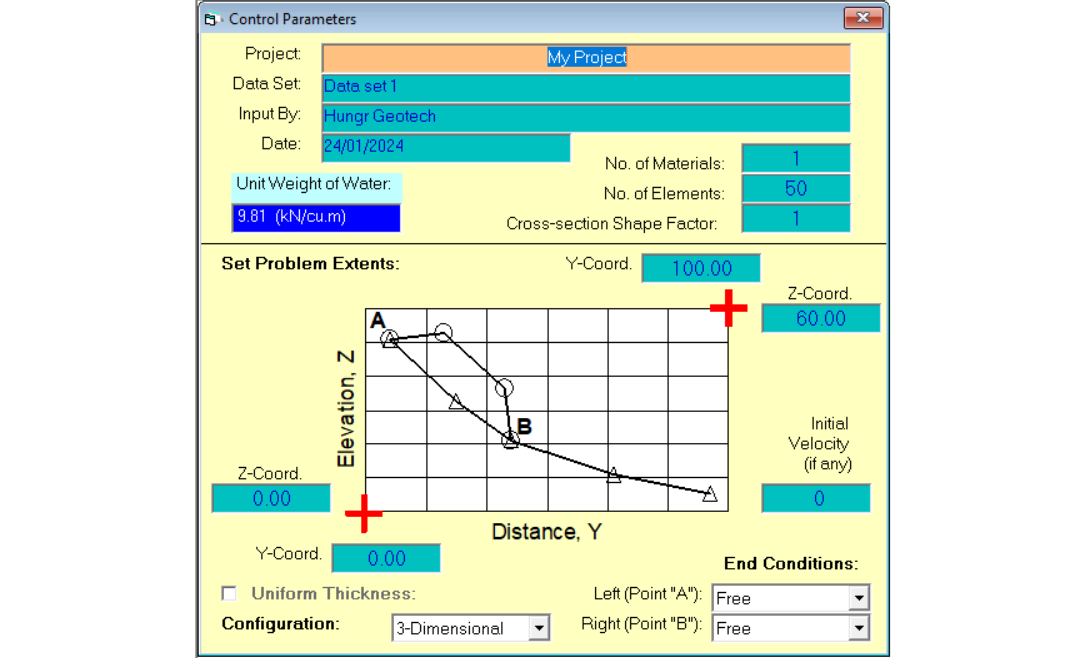DAN-W
2D Runout Analysis
DAN-W is a Windows-based geotechnical software tool used for dynamic runout analysis of rapid landslides and rock avalanches, based on a theory of runout analysis developed by Hungr (1995).
The program accepts user-input data in the form of path slope and initial sliding mass geometries, and material properties based on eight types of rheologies. For pseudo-three-dimensional analysis, the width of the slide can also be specified.
A Lagrangian solution of the integrated equations of motion is then implemented for thin elements of the flowing mass.
The sliding mass is animated on the screen as the calculation progresses. The model also simulates erosion and deposition of material.









